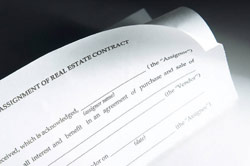 The way you approach mortgage shopping can literally save you thousands of dollars. Take time to understand your options and make educated decisions.
The way you approach mortgage shopping can literally save you thousands of dollars. Take time to understand your options and make educated decisions.
If we can explain any steps along the way, please ask. We're always happy to help.
The steps to successful financing
Get pre-approved. Getting pre-approved is fast, easy and free. With a pre-approval in your pocket, you won't waste time looking at homes you can't afford.
Instead, you can invest your time shopping for the home of your dreams - and in your price range.
Also, including your pre-approval with your offer lets the seller know you've done your homework and that you are a serious and qualified buyer.
Examine your finances. How much can you afford to spend? While a lender will tell you how much you qualify for, it's up to you to figure how big a payment fits into your budget. What monthly dollar amount do you feel comfortable committing to?
Consider what type of loan is best for you. Compare fixed-rate with adjustable rate mortgages. Interest only, negative amortization or principal and interest loans. Today there are many loan options to help you meet your financial goals. Look down the road. Where will you be in 3 years, 5 years? How long do you plan to live in this home? Discuss all of these things with your mortgage professional so they can assist you selecting the loan option for you.
Check your Credit Report. A lender will run a credit report on you (it only takes a few minutes), but you'll be ahead of the game if you acquire a copy first. You'll know exactly what's on it and be able to correct any inaccuracies.
Shop Around. When you're ready to get a loan, explore your options. You can choose either a direct lender or a mortgage broker.
A direct lender has money to lend and makes the final decision on your loan. Brokers are intermediaries who choose from many lenders.
While you're shopping for a loan, also look for the best loan costs. These may include:
• Interest rates
• Loan origination fees
• Loan discount points (each point is one percent of the amount you borrow)
• Prepayment penalties
• Loan application fees
• Credit report fees
• Appraisal costs
Be aware. Don't let hidden costs sneak up on you. Ask your lender for a written estimate.
Apply for a loan. Gather all the documents you'll need to verify your loan application. Lenders will want to know your job tenure, employment stability, income, assets (property, cars, bank accounts and investments) and your liabilities (auto loans, mortgages, installment loans, credit-card debt, household expenses and others).
You'll need to provide documents such as paycheck stubs, bank account statements and tax returns. Check with your lender or broker for more information.
Lock it in. A rate lock - in writing - guarantees you a certain rate and terms for a specified period of time. Interest rates change daily, in fact they can change several times throughout the day. You should discuss the pro's and con's of locking in your interest rate with your loan professional.
If you do elect to lock in your rate, be sure that the lock in time frame is long enough for your closing to be completed. This is especially important if you are purchasing a home that is still under construction.
Clear up any financial problems. Do you have credit problems or owe money to the IRS? Buying a new home may still be a possiblity. Contact a loan professional or tax resolution service to find solutions.

